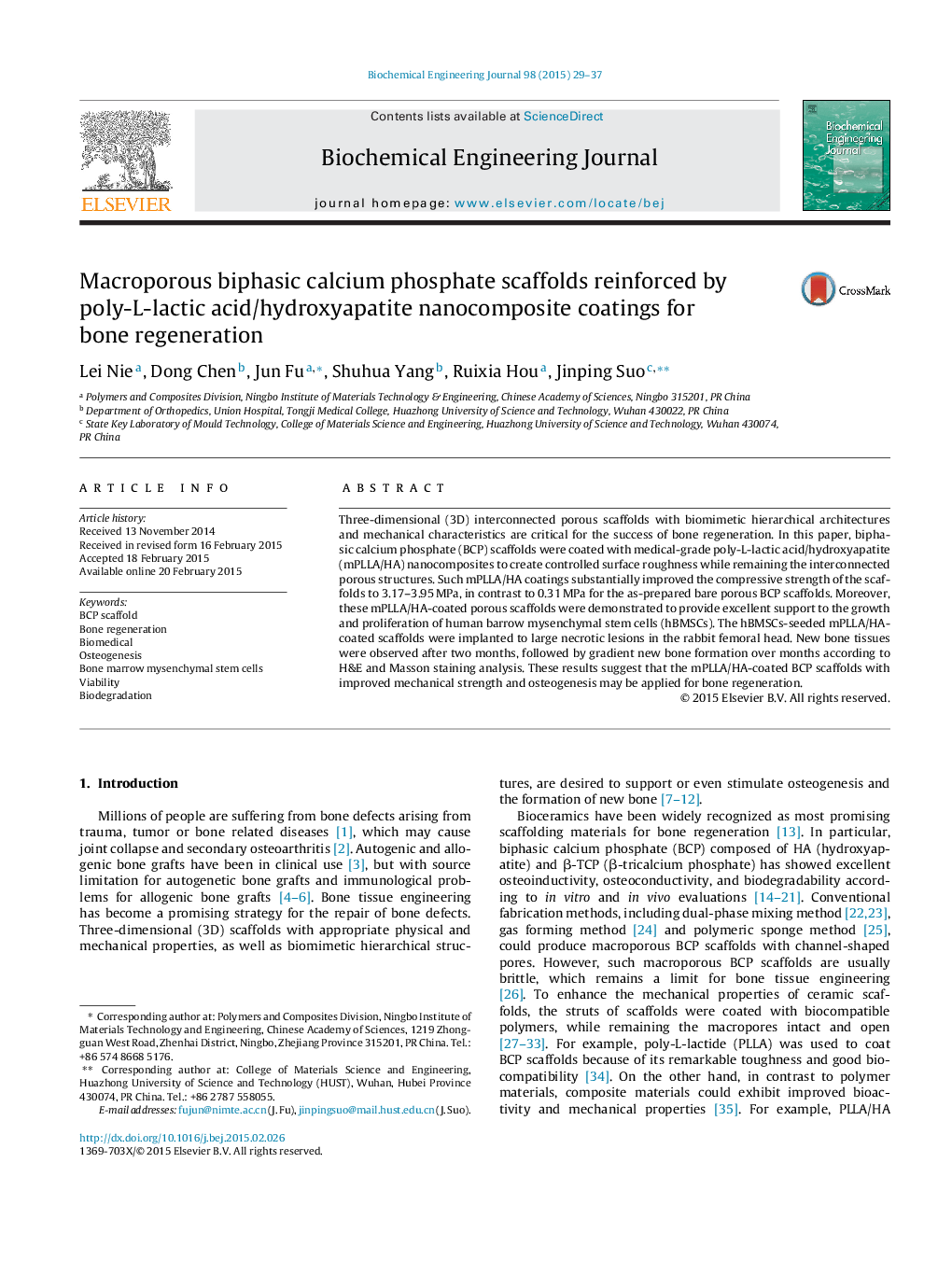| Article ID | Journal | Published Year | Pages | File Type |
|---|---|---|---|---|
| 2903 | Biochemical Engineering Journal | 2015 | 9 Pages |
•Biomimetic scaffolds were prepared for bone regeneration.•The compressive strength of scaffold was improved by nanocomposite coating.•Such scaffolds support hBMSCs growth and proliferation.•Gradient new bone was formed after scaffold was implanted to rabbit femoral head.
Three-dimensional (3D) interconnected porous scaffolds with biomimetic hierarchical architectures and mechanical characteristics are critical for the success of bone regeneration. In this paper, biphasic calcium phosphate (BCP) scaffolds were coated with medical-grade poly-L-lactic acid/hydroxyapatite (mPLLA/HA) nanocomposites to create controlled surface roughness while remaining the interconnected porous structures. Such mPLLA/HA coatings substantially improved the compressive strength of the scaffolds to 3.17–3.95 MPa, in contrast to 0.31 MPa for the as-prepared bare porous BCP scaffolds. Moreover, these mPLLA/HA-coated porous scaffolds were demonstrated to provide excellent support to the growth and proliferation of human barrow mysenchymal stem cells (hBMSCs). The hBMSCs-seeded mPLLA/HA-coated scaffolds were implanted to large necrotic lesions in the rabbit femoral head. New bone tissues were observed after two months, followed by gradient new bone formation over months according to H&E and Masson staining analysis. These results suggest that the mPLLA/HA-coated BCP scaffolds with improved mechanical strength and osteogenesis may be applied for bone regeneration.
Graphical abstractFigure optionsDownload full-size imageDownload as PowerPoint slide
